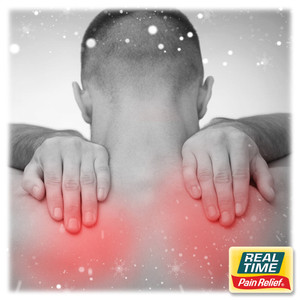Steroid Cream Alternatives for Itch Relief
14th Feb 2023
A steroid cream is often prescribed for itch relief. Creams work by decreasing inflammation, but can have unwanted side effects. Understanding the risks of steroid creams and learning about alternatives can help you relieve itching without side effects.
Causes of Skin Irritation
Itchy and irritated skin is very common. In fact, most people will develop some type of mild skin irritation in their lifetime. For some people, skin irritation is chronic. Itchy skin can occur at any age and may affect anyone regardless of your overall health. Older adults are especially prone to itchy skin since their skin tends to become drier.
There are many causes of skin irritation. For example, if you come in contact with something you are allergic to, such as shampoos, cleaning products, or latex, it can make your skin itchy. Irritated and itchy skin can also develop due to the following:
- Dermatitis
- Bug bites
- Poison ivy
- Dry skin
Symptoms of skin irritation can be mild or significant. In addition to becoming annoying and uncomfortable, skin itching has the potential to cause other problems. For instance, the National Eczema Association (NEA) reports that people who frequently have itchy skin may have trouble sleeping, which can lead to a variety of other issues.
What often happens is irritated skin becomes itchy, causing you to scratch.The more you scratch, the worse the itch may become, starting a vicious cycle of continuous irritation, itching, and scratching. Frequent scratching, leading to cracks in the skin, has the potential for infection.
Additional symptoms of itchy skin may include:
- Redness
- Burning
- Cracked skin
- Bumps
Side Effects of Steroid Creams
Because itchy skin is so annoying, some people turn to steroid creams to relieve symptoms. But the use of steroid creams can have side effects. Potential side effects of using steroid creams include:
- Thinning skin
- Blistering
- Skin peeling
According to the NEA, a condition called topical steroid withdrawal syndrome can also develop when you stop using steroid cream. Symptoms may include burning and bright red skin. The length of time it takes to develop side effects is not predictable and can vary.
Alternatives to Steroid Creams for Itch Relief
Since there can be side effects when using steroid creams, it makes sense to look for an alternative to relieve symptoms. Consider the following ways to decrease irritated and itchy skin:
#1) Use a Homeopathic Anti-Itch Cream
Homeopathic, non-steroidal anti-itch creams are available that provide symptom relief without the side effects of steroids. Select a homeopathic anti-itch cream with the active ingredient, helichrysum, to soothe the skin and reduce itching. Additional ingredients that provide relief include turmeric root, argan oil, aloe vera, and shea butter. Apply a liberal coat of the cream to the skin, wait a minute, and reapply a second coat.
#2) Take a Lukewarm Bath
A lukewarm bath may soothe the skin and decrease itching. Consider adding colloidal oatmeal to the bath to ease symptoms. Colloidal oatmeal is not regular oats you eat for breakfast. It is finely ground and intended for bathing. Lukewarm water is better for irritated skin than a warm bath. If the water is too warm, it might dry the skin, which can cause further irritation.
#3) Apply Cold Packs
Apply a cold pack or a cold washcloth to the affected skin for five to ten minutes at a time. Cooling the skin may decrease inflammation and irritation. The cool sensation on the skin may also ease itching. You can apply a cold pack several times a day as needed. Avoid applying the ice directly to the skin, since that can lead to an injury.
#4) Wear Loose Clothing
Tight and restrictive clothing may cause further irritation. As the clothing rubs against the skin, it might trigger more itching and inflammation of already irritated skin. Loose clothing that allows the skin to breathe is a better option.
#5) Avoid Scratching
It might seem like a no-brainer, but try to avoid scratching the area as much as possible. While it can be difficult to stop scratching, it will only make the situation worse. Trimming your nails can also be useful, as it reduces how hard you can scratch.
Preventing Itchy Skin
There are several things you can do to keep your skin healthy and itch-free, including the following:
#1) Identify Your Triggers
In some cases, you might not be sure what is irritating the skin. Keep a log of any new lotions, shampoos, and detergents you use.
#2) Wear Cotton Fabrics
Certain fabrics are more likely to cause itching, such as wool. If you are prone to itchy skin, loose cotton fabrics may be best.
#3) Use Fragrance-Free Products
Various skincare and personal care products that contain perfumes or artificial colors may irritate the skin and lead to itching. Opt for fragrance-free products instead.
#4) Apply a Moisturizer
Dry skin can become itchy. Keep your skin moisturized by avoiding baths and showers with very hot water. Apply a moisturizing lotion to the skin daily.
Dealing with Arthritis Pain? (Click Here) to learn how to reduce arthritis pain quickly!
Need alternative ways to get pain relief without taking pills? (Click Here) to learn more!
Check out our blog to learn a multitude of ways to start relieving your pain naturally!
Real Time Pain Relief not only cares about the quality ingredients that go into each and every one of our products – but also about the people who buy them. We hope this blog becomes a valued resource for your own personal journey to better health. For over 20 years, Real Time Pain Relief has provided family safe pain relief infused with Nature’s Ingredients. From the useful information in our articles to our high-quality products, we hope you feel better and pass it on!
Sources





